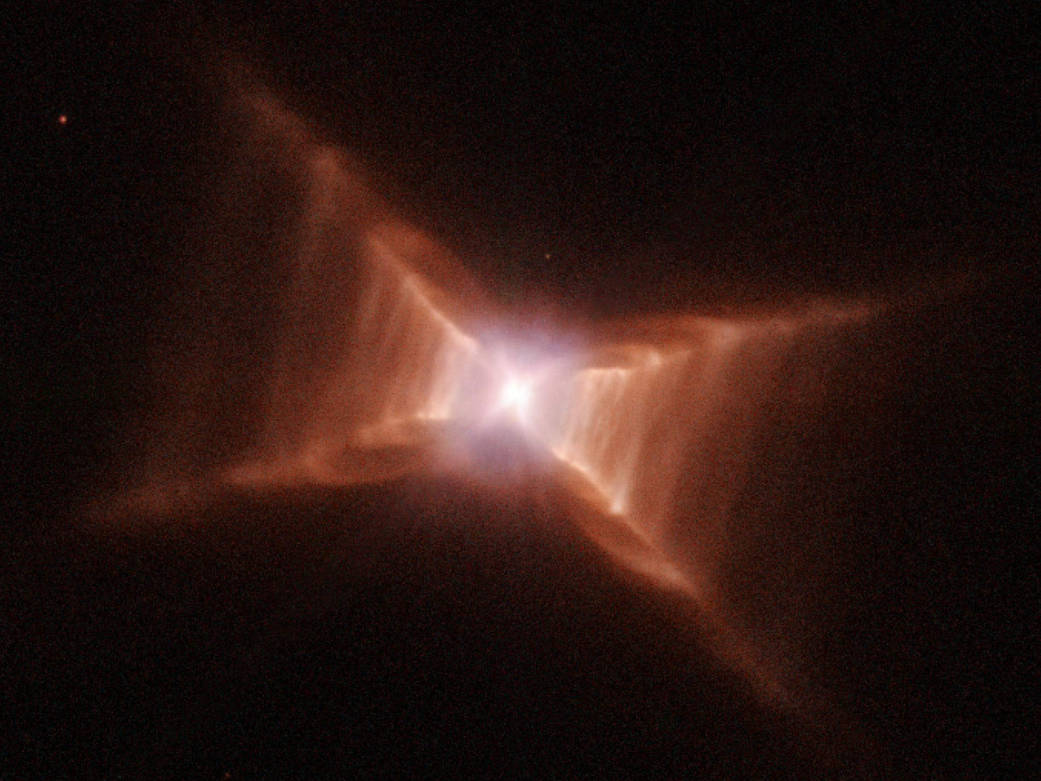
This intriguing image of the intriguing ladder-like structures surrounding a dying star reveals startling new details of one of the most unusual nebulae known in our Milky Way. Cataloged as HD 44179, this nebula is more commonly called the “Red Rectangle” because of its unique shape and color as seen with ground-based telescopes.
This Hubble Space Telescope image reveals a wealth of new features in the Red Rectangle that cannot be seen with ground-based telescopes looking through the Earth’s turbulent atmosphere.
Hubble’s sharp pictures show that the Red Rectangle is not really rectangular, but has an overall X-shaped structure, which arises from outflows of gas and dust from the star in the center. The outflows are ejected from the star in two opposing directions, producing its peculiar shape. Also remarkable are straight features that appear like rungs on a ladder, making the Red Rectangle look similar to a spider web, a shape unlike that of any other known nebula.
The star in the center of the Red Rectangle is one that began its life as a star similar to our sun. It is now nearing the end of its lifetime, and is in the process of ejecting its outer layers to produce the visible nebula. The shedding of the outer layers began about 14,000 years ago. Eventually, the star will have become smaller and hotter and begin to release a flood of ultraviolet light into the surrounding nebula; at that time, gas in the nebula will begin to fluoresce, producing what astronomers call a planetary nebula.Image credit: NASA, ESA, Hans Van Winckel (Catholic University of Leuven, Belgium), and Martin Cohen (University of California, Berkeley)


























